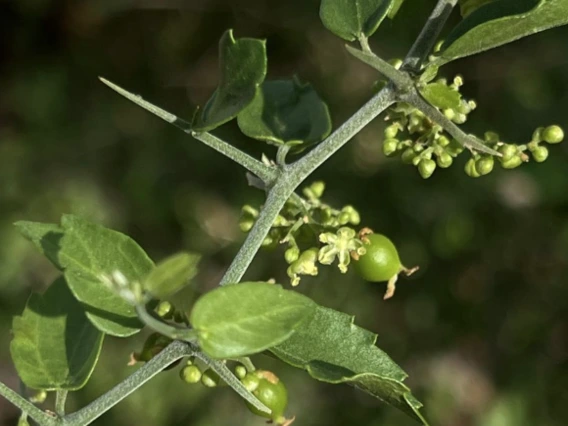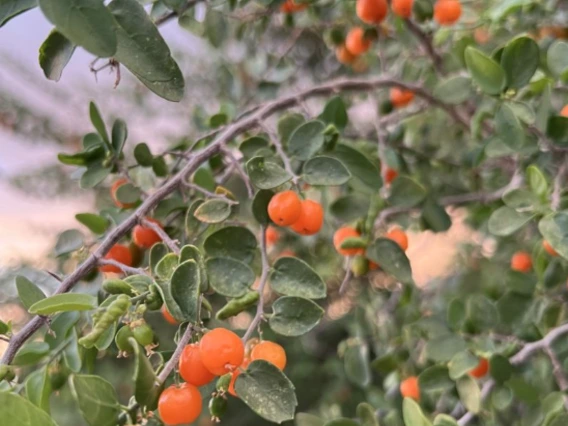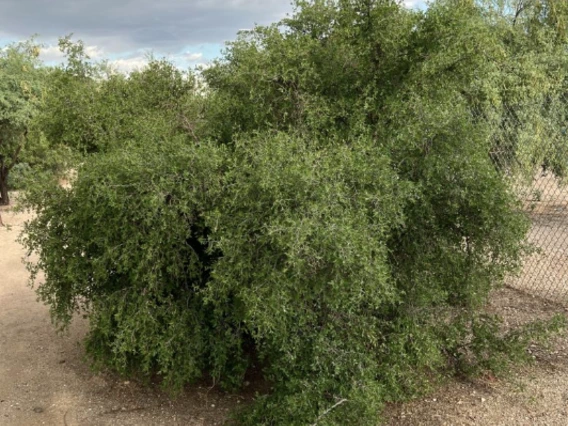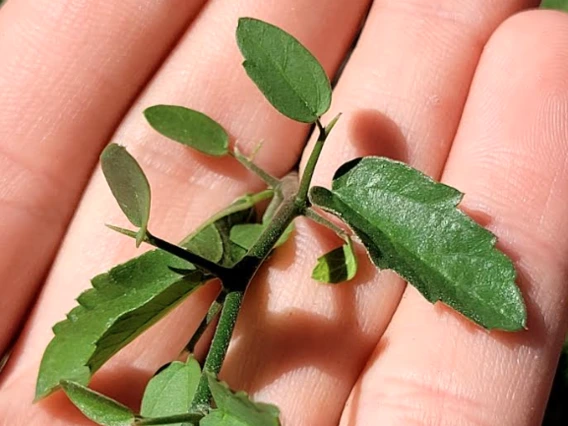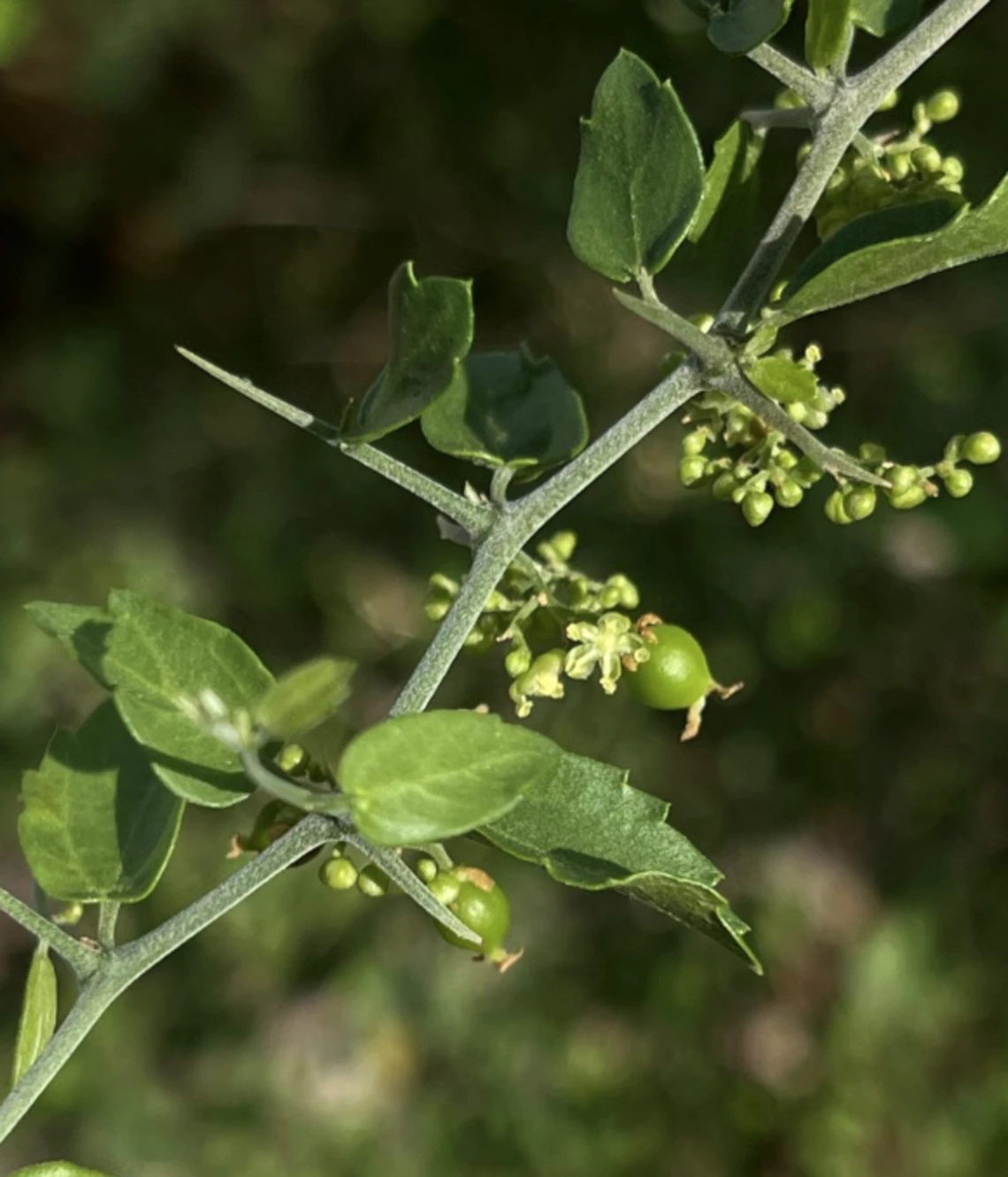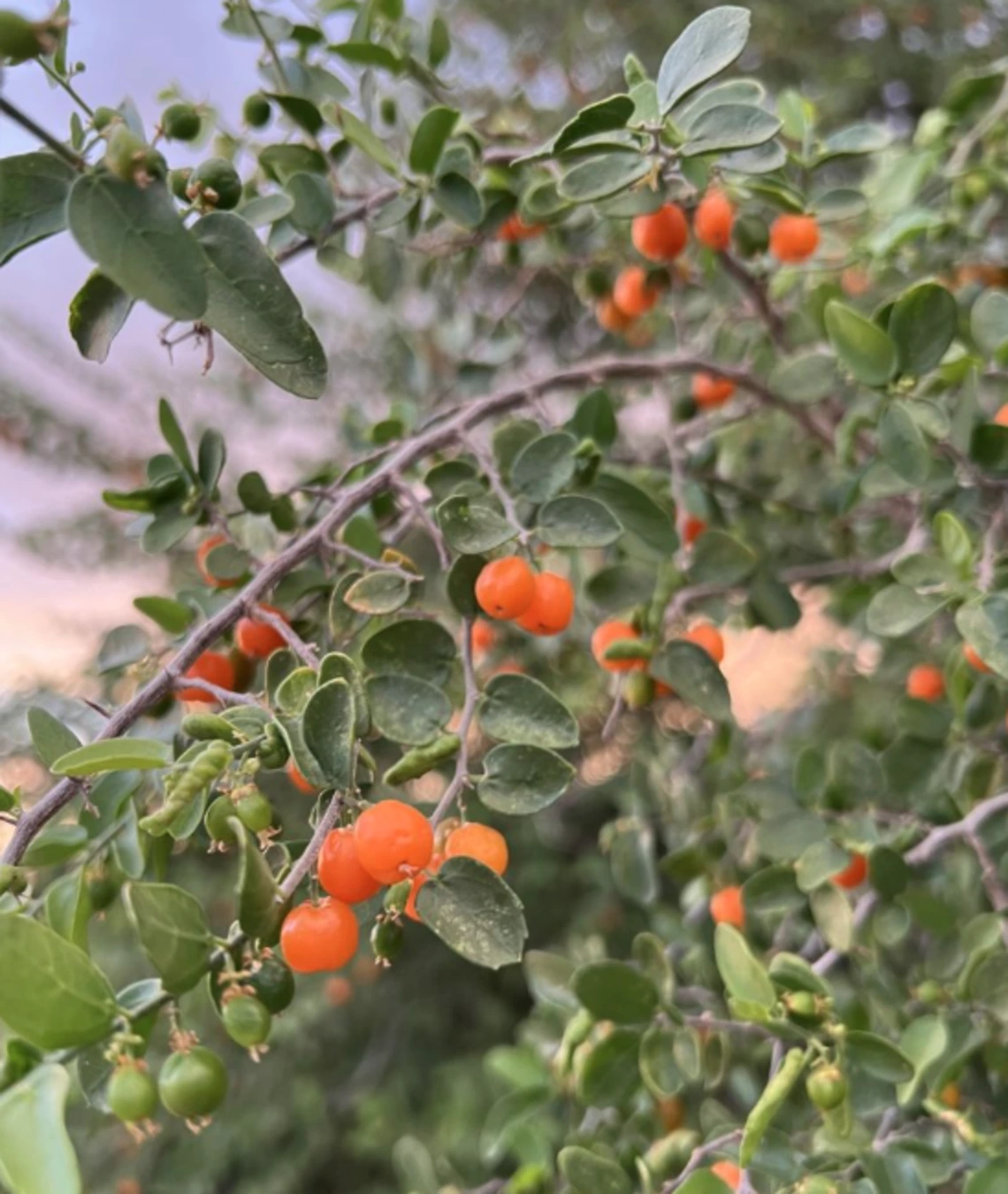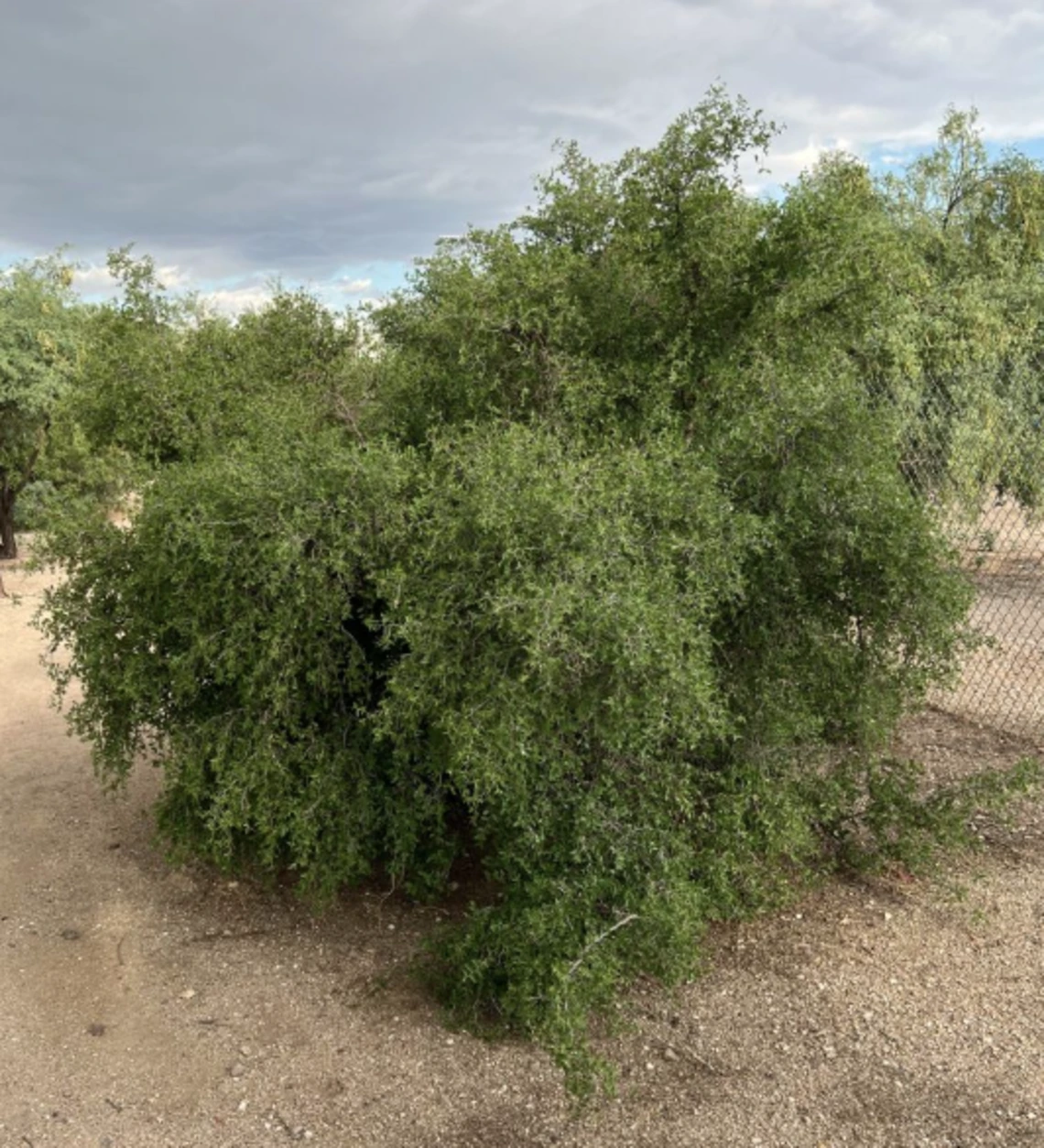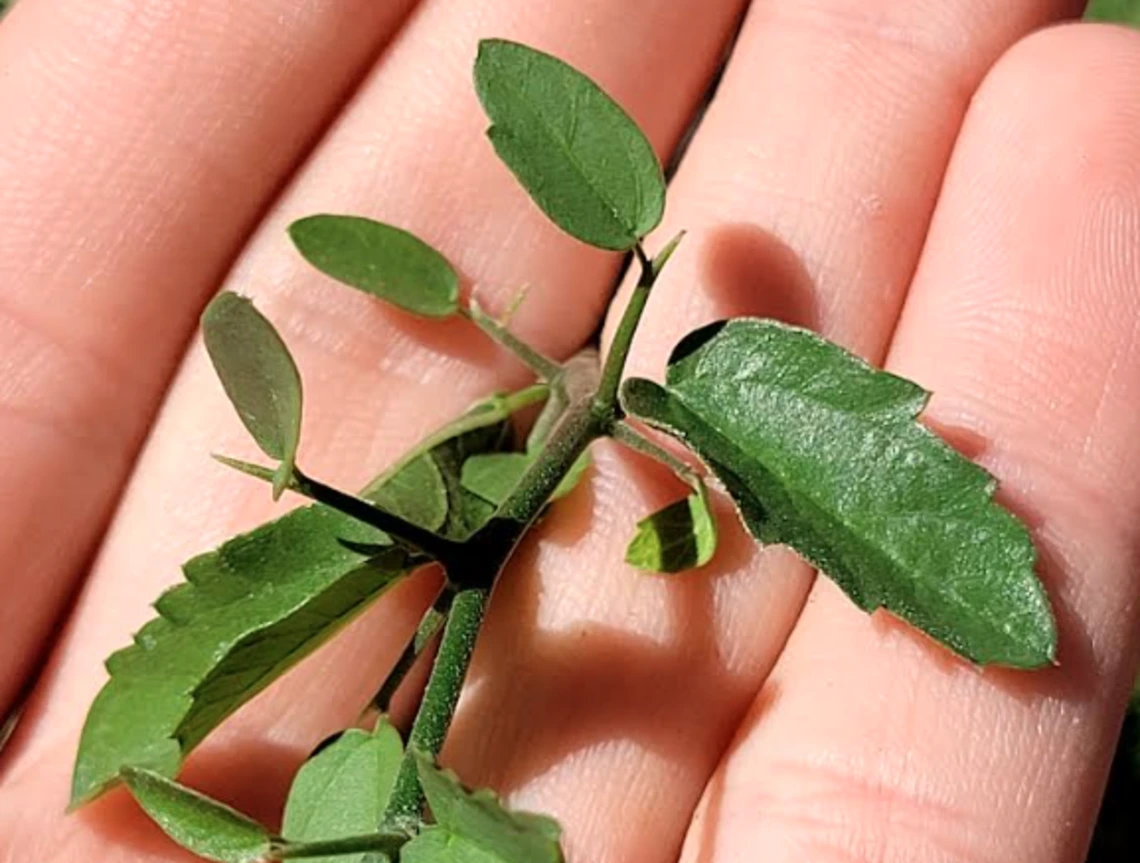Family: Cannabaceae
Compound: Cel pal
Synonyms: Celtis spinosa var. pallida
Geographic Origin: southwestern US, northern MX
Characteristics: A dense, evergreen shrub typically between 1.2-4.5m (4-15ft) in height. Small, rough, dark-green leaves form simple pinnate arrangements. Arranged along slightly zig-zagged branches are single or paired thorns. The desert hackberry’s thorns can grow to an inch in length making the plant a formidable barrier. The small, greenish-yellow flowers appear in spring and develop into small, 6mm (0.25in) round, brilliant orange or occasionally red drupes after pollination. The drupes have a thin, fleshy layer with a single large seed housed inside. Younger bark is thin, smooth, and white to grey, but can become thicker and rougher in texture.
Natural History: Found along washes, on alluvial plains, and rocky or gravelly slopes in sonoran desert scrub, and semi-desert grasslands at elevations of 457- 1219m (1,500 - 4,000ft). The flowers are visited by many pollinators and fruits eaten by birds, small mammals and likely other wildlife.
Cultivation Notes: Desert hackberry grows best in full sun to partial shade and can tolerate many soils as long as they are well-drained. Newly planted individuals may need supplemental waterings, but once established, they are very drought resistant. Extra watering may help create a larger, denser plant. Trees prefer hotter summers and more sunlight than normal. Trees can be very long-lived, perhaps to 1000 years. Seed is best sown as soon as it is ripe in a cold frame. Stored seed is best given two to three months cold stratification and then sown February/March in a greenhouse. Germination rates are usually good, though the stored seed might take 12 months or more to germinate. The seed can be stored for up to 5 years.
For general plant propagation information, click here
Ethnobotany: Fruit are edible and sweet. In modern landscaping this plant is favored for its dense growth and vibrant green color. Because of its dense growth form and heavy spination, it makes a good barrier to keep unwanted people and large animals out of a given area.
Citations:
oregonstate.edu. Retrieved October 19, 2018.
https://landscapeplants.oregonstate.edu/plants/celtis-pallida
aggie-horticulture.tamu.edu. Retrieved October 19, 2018.
https://aggie-hort.tamu.edu/ornamentals/nativeshrubs/celtispallid.htm
rangeplants.tamu.edu. Retrieved October 19, 2018.
https://rangeplants.tamu.edu/plant/spiny-hackberry-granjeno/
Arid Zone Trees. Retrieved October 19, 2018.
https://aridzonetrees.com/celtis-pallida.html
SEINet Arizona – New Mexico Chapter. Retrieved June 22, 2024.
https://swbiodiversity.org/seinet/taxa/index.php?taxon=3163
Southwest Desert Flora. Retrieved June 22, 2024.
Walters, James E, and Balbir Backhaus. Shade and Color with Water-Conserving Plants. Timber Press, 1992.
Plants for a Future. Retrieved October 19, 2018.


